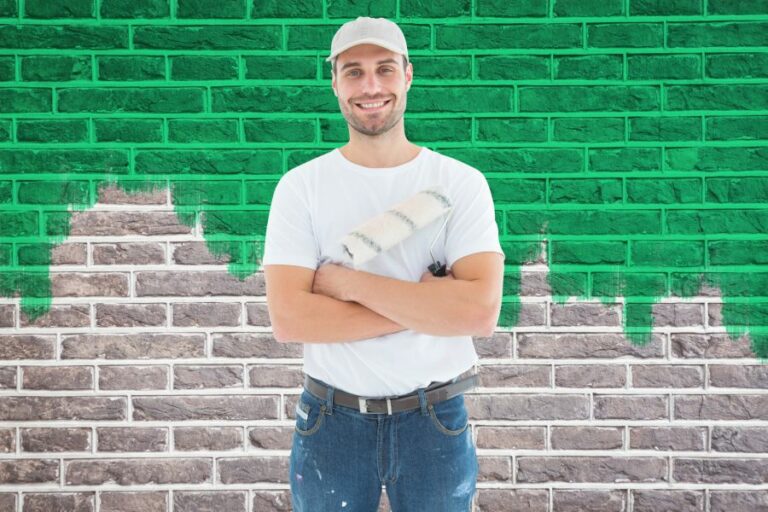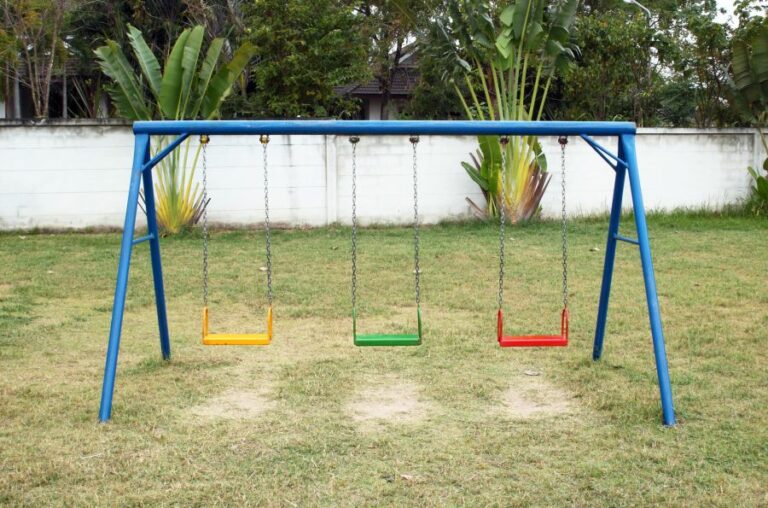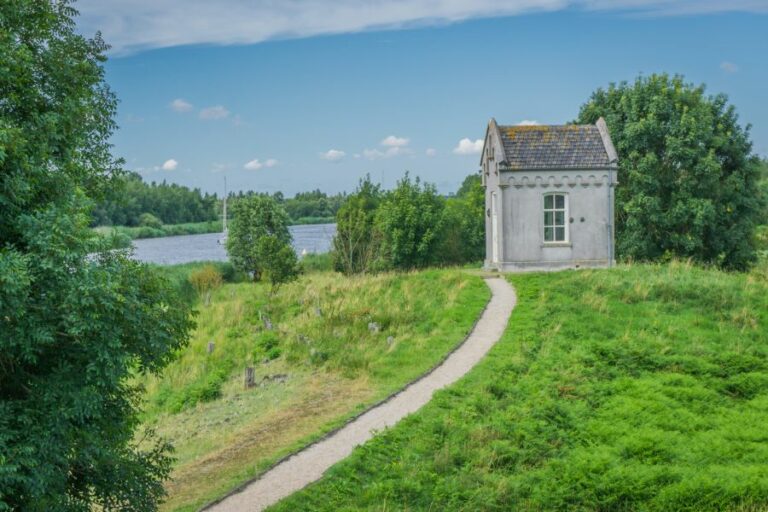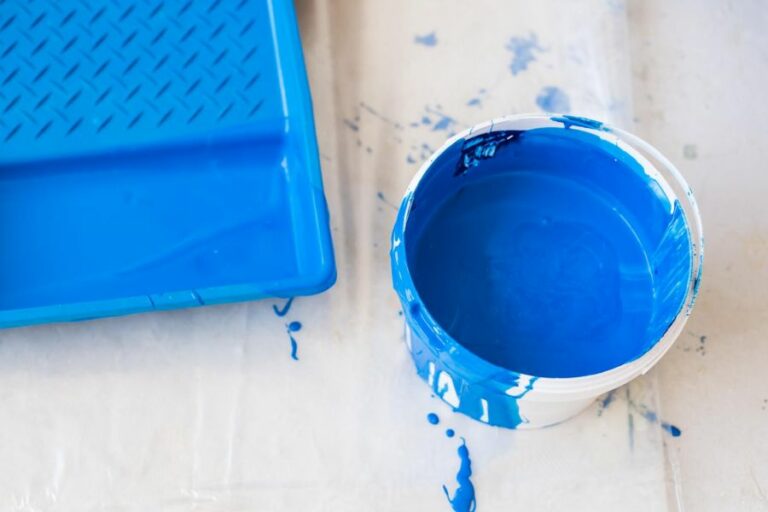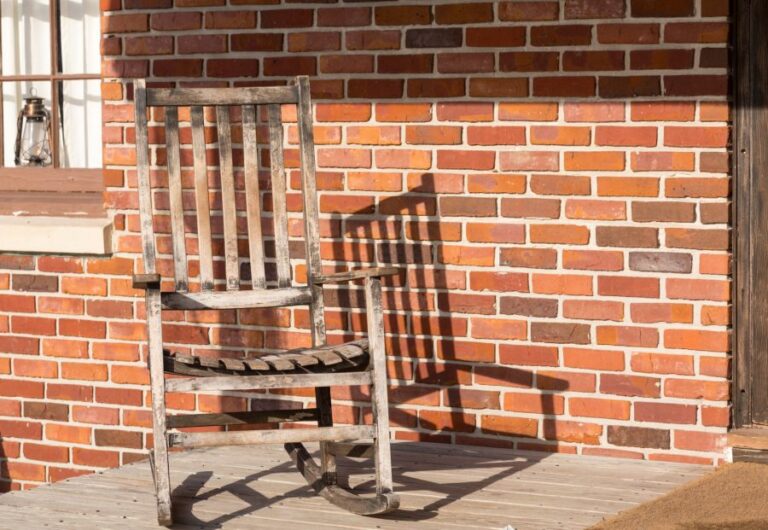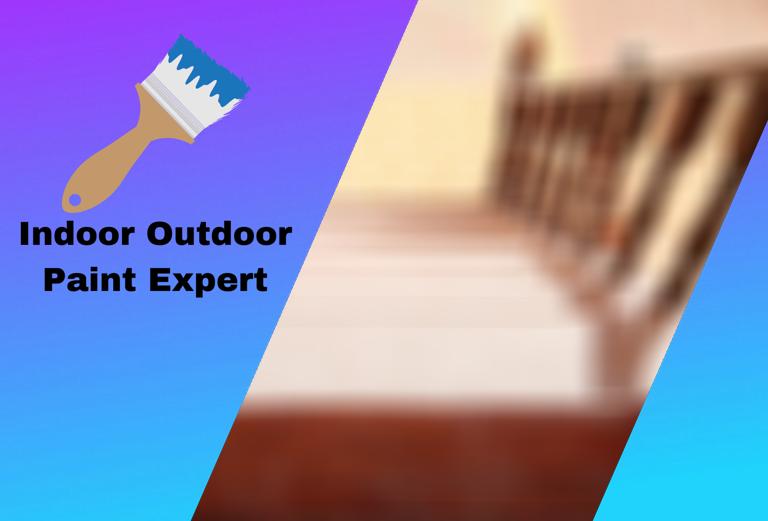Wood Paint for Outdoor Projects: A Comprehensive Guide
Are you looking to give your wooden furniture or outdoor projects a fresh, vibrant look? Then you’ve come to the right place! Our comprehensive blog post on outdoor wood paint provides essential insights on choosing the perfect shade, the right type of paint, and expert application tips to achieve a stunning, long-lasting finish. Say goodbye to dull, weather-worn wood surfaces and hello to a fabulous outdoor makeover. Join us on this colorful adventure, and let’s transform your exterior spaces together!
Outdoor wood paint:
Outdoor wood paint protects wooden surfaces from harsh weather conditions, UV rays, and external factors that cause wear and tear. Available in various types, such as oil-based, water-based, solid stain paints, and wood preservatives, outdoor wood paint enhances the appearance and durability of outdoor spaces.
Selecting the right paint involves considering factors like climate, color preference, application method, and drying time. To achieve long-lasting results, thorough preparation, proper application, and regular maintenance of outdoor wood paint are crucial.

Discover the best outdoor wood paint options for durability and style. We’ve gathered expert advice on different finishes, application techniques, and maintenance tips to ensure your wooden surfaces sustain their beauty and charm through all seasons. Read on to elevate your outdoor space aesthetics.
Contents
- 1 Exterior Wooden Surface Paint
- 2 Which Kind of Paint is Most Suitable for Exterior Wood Surfaces?
- 3 What is the Most Durable Exterior Paint for Wood Surfaces?
- 3.1 • Factors Affecting the Durability of Exterior Paint
- 3.2 • Top Longest Lasting Exterior Paints for Wood
- 3.3 • Additional Tips for Achieving Long-Lasting Exterior Paint Results
- 3.4 • Tips for Choosing the Right Outdoor Wood Paint
- 3.5 • Preparation Tips for Painting Outdoor Wood
- 3.6 • Application Tips for Outdoor Wood Paint
- 3.7 • Maintaining Outdoor Wood Paint
- 4 Which Kind of Paint is Most Suitable for Exterior Wood Surfaces?
- 5 What is the Most Durable Exterior Paint for Wood Surfaces?
Exterior Wooden Surface Paint
• Why You Need Outdoor Wood Paint
Outdoor wood paint protects your wooden surfaces from harsh weather conditions, UV rays, and other external factors that may lead to wear and tear. These paints also give your wood a fresh and attractive look, enhancing the overall appearance of your outdoor space. Some of the key benefits of using outdoor wood paint include the following:
- Protection from moisture, rot, and insect infestation
- Enhanced durability and maintenance of wood’s structural integrity
- Smooth finishes and vibrant color options
- Easy application and cleanup
• Different Types of Outdoor Wood Paint
Several types of outdoor wood paint are available in the market, each with unique features and benefits. Here are the most common ones:
– 1. Oil-based and Water-based Wood Paint
Both oil-based and water-based wood paints are great options for outdoor wood surfaces. They provide a long-lasting protective barrier, help repel water, and maintain wood’s structural integrity.
- Oil-based wood paint is known for its durability and smooth finish. Oil-based paints penetrate deeper into the wood fibers, providing better protection. However, these paints take longer to dry and may have a strong odor during application.
- Water-based wood paint, on the other hand, dries faster and has a low odor compared to oil-based wood paint. It is also easier to clean up after use. However, it might offer a different level of durability and protection than oil-based wood paint.
– 2. Solid Stain Paints
Solid stain wood paints are a hybrid between paint and stain, which gives your wood the appearance of being stained but behaves like paint. These paints offer excellent UV protection and can last several years if properly applied and maintained.
Solid stain wood paints are ideal for fences, decks, and other wood structures subject to constant exposure to the elements.
– 3. Wood Preservatives
Wood preservatives are explicitly formulated to protect the wood from insects, rot, and mildew; these wood treatments can be even more crucial for harsh environments. While some outdoor wood paint products include wood preservatives, you can also use these treatments as a separate step in your painting process.
• Tips for Choosing the Right Outdoor Wood Paint
Here are some factors to consider when selecting the perfect outdoor wood paint:
- Climate: Consider the prevailing climate in your area. For instance, if you live in a region with extreme temperatures, UV rays, or high humidity, you should opt for a paint designed to withstand such conditions.
- Color preference: Choose a color that complements your outdoor space and the overall aesthetics of your property. Remember that darker colors absorb more heat, a concern in hot climates.
- Application method: Some outdoor wood paints can be applied using a brush, roller, or spray. Choose the paint that is compatible with your preferred application method.
- Drying time: Consider your timelines and choose an outdoor wood paint with drying times that suit your requirements.
• Preparation Tips for Painting Outdoor Wood
Before you start painting, thoroughly preparing your wood surfaces is crucial. Here are a few essential tips to help you with the process:
- Clean the surface: Remove any dirt, mold, mildew, or debris from the wood surface using a brush, broom, or pressure washer. If there is any old paint on the wood, scrape it using a paint scraper or sandpaper.
- Treat the wood: If necessary, apply a wood preservative to protect it from insects and rot.
- Smooth the surface: Sand the wood surface to make it smooth, ensuring you follow the wood grain to avoid scratches. Remove sanding dust with a clean, damp cloth.
- Prime the wood: Applying a wood primer helps seal the wood and provides a smooth surface for the paint to adhere to.
• Application Tips for Outdoor Wood Paint
Follow these steps to ensure a successful outdoor wood paint job:
- Stir the paint: Before you start, stir the paint to ensure proper mixing and even color distribution.
- Use the right tools: Select the appropriate brush, roller, or spray gun for your chosen paint.
- Start with a thin layer: Apply the first coat of paint as a thin layer. This step prevents the paint from peeling, cracking, or blistering.
- Apply multiple coats: After the first coat has dried, follow up with additional coats to ensure maximum protection and a smooth finish. Always refer to the paint manufacturer’s guidelines for the recommended number of coats and drying times.
- Clean up: Once the paint job is finished, clean your brushes, rollers, and other tools as per the paint manufacturer’s instructions.
• Maintaining Outdoor Wood Paint
Regular maintenance is crucial to keep your outdoor wood surfaces looking fresh and vibrant. Follow these tips:
- Inspect regularly: Regularly check your wood surfaces for signs of wear, peeling paint, or damage. Address any issues promptly to prolong the life of your paint job.
- Clean the surface: Clean dirt and debris from the painted surfaces periodically to prevent the buildup of grime, mold, and mildew. Use a soft brush and mild detergent solution where necessary.
- Reapply paint: Depending on the durability of your outdoor wood paint and the conditions it is exposed to, you may need to reapply paint every few years. Keep a close eye on the condition of your paint job to determine when it’s time for a touch-up.
In conclusion, using high-quality outdoor wood paint can dramatically enhance the look of your outdoor spaces while protecting against harsh weather conditions and external factors.
You can achieve long-lasting, stunning results by understanding the available paint options, properly preparing your wood surfaces, and following recommended application and maintenance practices.
Which Kind of Paint is Most Suitable for Exterior Wood Surfaces?
As a home improvement enthusiast, I’ve always been particular about the materials I use for my outdoor wood projects. After all, outdoor wood surfaces are exposed to various elements that can affect their longevity and appearance.
Choosing the right paint is one of the most critical factors in maintaining the durability and beauty of outdoor wood. I will share my insights on the best types of paint for outdoor wood based on my experience and expertise.
• Factors to Consider When Choosing Paint for Outdoor Wood
Before discussing specific types of paint, it’s essential to understand the factors that should influence your choice of paint for outdoor wood. Here are the main factors to consider:
– Durability
Outdoor wood is exposed to harsh weather conditions like sunlight, rain, snow, and extreme temperature changes. Therefore, choosing a paint that can withstand these conditions and provide long-lasting protection to your wood surfaces is crucial.
– Fade Resistance
Prolonged exposure to the sun’s ultraviolet (UV) radiation can cause paint color to fade. The best paint for outdoor wood should have excellent fade resistance to maintain its appearance for years.
– Moisture Resistance
Moisture is one of the main enemies of wood, as it causes rot, mold, and mildew. Choosing paint with excellent moisture resistance can help prevent these problems and prolong the life of your outdoor wood surfaces.
– Ease of Application
You’ll want to select a paint that you can easily apply to your outdoor wood surfaces, whether by brush, roller, or spray.
• Recommended Types of Paint for Outdoor Wood
With these factors in mind, here are my recommendations for the best types of paint for outdoor wood:
– Acrylic Latex Paint
Acrylic latex paint has become the go-to option for many DIY enthusiasts and professionals when painting outdoor wood. This type of paint offers several advantages:
- It provides excellent durability, allowing your wood surfaces to withstand extreme weather conditions and resist fading from sunlight exposure.
- Acrylic latex paint is water-based and has excellent moisture resistance, reducing the risk of wood rot, mold, and mildew. The paint dries relatively quickly, and cleanup is easy since it’s water-soluble.
- The paint dries relatively quickly, and cleanup is easy since it’s water-soluble.
- It typically has low volatile organic compound (VOC) levels, making it eco-friendly.
Recommendations
When choosing an acrylic latex paint for your outdoor wood project, look for a 100% acrylic formulation. Brands such as Behr, Benjamin Moore, and Sherwin-Williams offer excellent acrylic latex paints that provide long-lasting protection and fade resistance.
– Oil-Based Paint
While acrylic latex paint has become increasingly popular, oil-based paint is still an excellent choice for painting outdoor wood. The key benefits of oil-based paint include the following:
- It’s highly durable and provides a long-lasting finish.
- Oil-based paint adheres exceptionally well to wood surfaces, ensuring excellent protection from the elements.
- The paint’s high gloss finish looks attractive and can help enhance the beauty of your outdoor wood.
However, there are some downsides to using oil-based paint. Because it’s solvent-based, the paint emits higher levels of VOCs, which can be harmful if inhaled. Oil-based paints can take longer to dry and are more challenging to clean up.
Recommendations
For those who prefer oil-based paint for outdoor wood projects, a top-quality brand like Rust-Oleum should provide the durability and protection you need.
– Exterior Wood Stain
While not technically paint, exterior wood stains offer a viable alternative for outdoor wood projects. Stains provide an attractive finish that highlights the natural beauty of the wood while still offering protection from the elements. Some of the benefits of exterior wood stains include the following:
- They provide a more natural look that showcases the wood grain and can be applied in various opacity levels, offering more control over the final appearance.
- Exterior wood stains typically contain UV inhibitors, protecting against sun damage and fading.
- They are available in both water-based and oil-based formulations to suit your preferences.
However, remember that wood stains may not provide the same protection or durability as other paint options.
Recommendations
For the best results when using an exterior wood stain, choose a reputable brand like Cabot, Olympic, or Ready Seal to ensure maximum protection and attractiveness.
• Final Thoughts
In conclusion, my top recommendation for the best type of paint for outdoor wood would be high-quality, 100% acrylic latex paint. This paint offers the perfect balance of durability, fade resistance, and moisture protection while being easy to apply and clean up afterward.
However, if you prefer a more traditional oil-based paint, Rust-Oleum is an excellent choice to provide your outdoor wood surfaces with long-lasting protection.
Lastly, if showcasing the natural beauty of your wood is a priority, a high-quality exterior wood stain from a trusted brand can be a great alternative.
Whichever paint option you choose, proper surface preparation and application techniques are essential to ensure the best results and protection for your outdoor wood surfaces.
What is the Most Durable Exterior Paint for Wood Surfaces?
As an experienced painter and decorator, I’ve encountered various exterior paint options for wood surfaces. When choosing long-lasting and durable paint for your home’s facade, fences, or outdoor furniture, making an informed decision is crucial.
In this comprehensive guide, I’ll provide insights into the longest-lasting exterior paint for wood and share my recommendations for achieving the best results.
• Factors Affecting the Durability of Exterior Paint
Before delving into specific paint options, I’d like to highlight the factors that impact paint’s durability and the longevity of your paint job. These factors should be considered when selecting an exterior paint for wood.
– Quality of Paint
The quality of the paint you choose is vital in determining its durability. High-quality paints generally have better adhesion, color retention, and resistance to environmental factors, such as UV rays, moisture, and temperature fluctuations.
– Surface Preparation
Proper surface preparation is essential in ensuring the paint’s longevity. Thoroughly cleaning the wood surface, filling gaps or cracks, and applying a suitable primer will result in better adhesion and, ultimately, a longer-lasting paint job.
– Application Techniques
The application technique and tools used can also impact the durability of the paint. Selecting the right brushes, rollers, or sprayers and ensuring that the paint is applied evenly and within the manufacturer’s recommended guidelines can make a significant difference.
– Maintenance
Regular maintenance, such as cleaning, checking for damage or wear, and addressing any issues promptly, helps extend your paint job’s lifespan.
• Top Longest Lasting Exterior Paints for Wood
After considering various factors and drawing from my experiences, I recommend the following exterior paints for wood surfaces.
– 1. Sherwin-Williams Duration Exterior Acrylic Latex
This premium exterior paint from Sherwin-Williams offers exceptional durability, weather resistance, and color retention. Its self-priming formula allows for easy application and long-lasting protection. It also resists mildew, making it ideal for humid climates.
– 2. Behr Marquee Exterior Paint & Primer
Another top choice is Behr Marquee, a combined paint and primer product. This high-quality, 100% acrylic paint offers superior adhesion, excellent coverage, and resistance to fading, cracking, and peeling. The built-in primer saves time and ensures better performance.
– 3. Benjamin Moore Regal Select Exterior High Build Paint
Benjamin Moore’s Regal Select paint offers remarkable durability, UV protection, and resistance to fading and peeling. Its high-build formula provides a thicker layer, enhancing the paint’s protective qualities and offering smoother coverage.
– 4. PPG Timeless Exterior Paint & Primer
PPG Timeless is another exceptional option with an integrated paint and primer formula. It offers advanced UV protection, excellent adhesion, and a durable finish that resists chipping, cracking, and fading. This paint is also low-VOC and low-odor, making it a more environmentally friendly choice.
• Additional Tips for Achieving Long-Lasting Exterior Paint Results
To ensure the best possible outcome when using long-lasting exterior paint for wood, I recommend following these tips:
– Choose the Right Primer
A high-quality primer for exterior wood surfaces helps enhance paint adhesion, coverage, and durability. Sometimes, the paint may include a built-in primer, but it’s always beneficial to consult the manufacturer’s recommendations.
– Don’t Skimp on Paint Quality
Investing in high-quality, long-lasting paint may cost more upfront, but it will save you time and money in the long run by reducing the need for frequent touch-ups or repainting.
– Follow the Manufacturer’s Guidelines
To ensure optimal paint performance, always follow the manufacturer’s guidelines for surface preparation, application techniques, and ideal environmental conditions during application and drying.
– Apply Multiple Coats
As the manufacturer recommends, applying multiple coats of paint will provide a more durable and long-lasting finish.
In conclusion, the best exterior paint for wood depends on various factors, including the quality of the paint, surface preparation, and application techniques. By selecting high-quality paint and following the above recommendations, you can achieve a durable and long-lasting paint job that protects your home and enhances its appearance for years.
- Oil-based wood paint is known for its durability and smooth finish. Oil-based paints penetrate deeper into the wood fibers, providing better protection. However, these paints take longer to dry and may have a strong odor during application.
- Water-based wood paint, on the other hand, dries faster and has a low odor compared to oil-based wood paint. It is also easier to clean up after use. However, it might offer a different level of durability and protection than oil-based wood paint.
– 2. Solid Stain Paints
Solid stain wood paints are a hybrid between paint and stain, which gives your wood the appearance of being stained but behaves like paint. These paints offer excellent UV protection and can last several years if properly applied and maintained.
Solid stain wood paints are ideal for fences, decks, and other wood structures subject to constant exposure to the elements.
– 3. Wood Preservatives
Wood preservatives are explicitly formulated to protect the wood from insects, rot, and mildew; these wood treatments can be even more crucial for harsh environments. While some outdoor wood paint products include wood preservatives, you can also use these treatments as a separate step in your painting process.
• Tips for Choosing the Right Outdoor Wood Paint
Here are some factors to consider when selecting the perfect outdoor wood paint:
- Climate: Consider the prevailing climate in your area. For instance, if you live in a region with extreme temperatures, UV rays, or high humidity, you should opt for a paint designed to withstand such conditions.
- Color preference: Choose a color that complements your outdoor space and the overall aesthetics of your property. Remember that darker colors absorb more heat, a concern in hot climates.
- Application method: Some outdoor wood paints can be applied using a brush, roller, or spray. Choose the paint that is compatible with your preferred application method.
- Drying time: Consider your timelines and choose an outdoor wood paint with drying times that suit your requirements.
• Preparation Tips for Painting Outdoor Wood
Before you start painting, thoroughly preparing your wood surfaces is crucial. Here are a few essential tips to help you with the process:
- Clean the surface: Remove any dirt, mold, mildew, or debris from the wood surface using a brush, broom, or pressure washer. If there is any old paint on the wood, scrape it using a paint scraper or sandpaper.
- Treat the wood: If necessary, apply a wood preservative to protect it from insects and rot.
- Smooth the surface: Sand the wood surface to make it smooth, ensuring you follow the wood grain to avoid scratches. Remove sanding dust with a clean, damp cloth.
- Prime the wood: Applying a wood primer helps seal the wood and provides a smooth surface for the paint to adhere to.
• Application Tips for Outdoor Wood Paint
Follow these steps to ensure a successful outdoor wood paint job:
- Stir the paint: Before you start, stir the paint to ensure proper mixing and even color distribution.
- Use the right tools: Select the appropriate brush, roller, or spray gun for your chosen paint.
- Start with a thin layer: Apply the first coat of paint as a thin layer. This step prevents the paint from peeling, cracking, or blistering.
- Apply multiple coats: After the first coat has dried, follow up with additional coats to ensure maximum protection and a smooth finish. Always refer to the paint manufacturer’s guidelines for the recommended number of coats and drying times.
- Clean up: Once the paint job is finished, clean your brushes, rollers, and other tools as per the paint manufacturer’s instructions.
• Maintaining Outdoor Wood Paint
Regular maintenance is crucial to keep your outdoor wood surfaces looking fresh and vibrant. Follow these tips:
- Inspect regularly: Regularly check your wood surfaces for signs of wear, peeling paint, or damage. Address any issues promptly to prolong the life of your paint job.
- Clean the surface: Clean dirt and debris from the painted surfaces periodically to prevent the buildup of grime, mold, and mildew. Use a soft brush and mild detergent solution where necessary.
- Reapply paint: Depending on the durability of your outdoor wood paint and the conditions it is exposed to, you may need to reapply paint every few years. Keep a close eye on the condition of your paint job to determine when it’s time for a touch-up.
In conclusion, using high-quality outdoor wood paint can dramatically enhance the look of your outdoor spaces while protecting against harsh weather conditions and external factors.
You can achieve long-lasting, stunning results by understanding the available paint options, properly preparing your wood surfaces, and following recommended application and maintenance practices.
Which Kind of Paint is Most Suitable for Exterior Wood Surfaces?
As a home improvement enthusiast, I’ve always been particular about the materials I use for my outdoor wood projects. After all, outdoor wood surfaces are exposed to various elements that can affect their longevity and appearance.
Choosing the right paint is one of the most critical factors in maintaining the durability and beauty of outdoor wood. I will share my insights on the best types of paint for outdoor wood based on my experience and expertise.
• Factors to Consider When Choosing Paint for Outdoor Wood
Before discussing specific types of paint, it’s essential to understand the factors that should influence your choice of paint for outdoor wood. Here are the main factors to consider:
– Durability
Outdoor wood is exposed to harsh weather conditions like sunlight, rain, snow, and extreme temperature changes. Therefore, choosing a paint that can withstand these conditions and provide long-lasting protection to your wood surfaces is crucial.
– Fade Resistance
Prolonged exposure to the sun’s ultraviolet (UV) radiation can cause paint color to fade. The best paint for outdoor wood should have excellent fade resistance to maintain its appearance for years.
– Moisture Resistance
Moisture is one of the main enemies of wood, as it causes rot, mold, and mildew. Choosing paint with excellent moisture resistance can help prevent these problems and prolong the life of your outdoor wood surfaces.
– Ease of Application
You’ll want to select a paint that you can easily apply to your outdoor wood surfaces, whether by brush, roller, or spray.
• Recommended Types of Paint for Outdoor Wood
With these factors in mind, here are my recommendations for the best types of paint for outdoor wood:
– Acrylic Latex Paint
Acrylic latex paint has become the go-to option for many DIY enthusiasts and professionals when painting outdoor wood. This type of paint offers several advantages:
- It provides excellent durability, allowing your wood surfaces to withstand extreme weather conditions and resist fading from sunlight exposure.
- Acrylic latex paint is water-based and has excellent moisture resistance, reducing the risk of wood rot, mold, and mildew. The paint dries relatively quickly, and cleanup is easy since it’s water-soluble.
- The paint dries relatively quickly, and cleanup is easy since it’s water-soluble.
- It typically has low volatile organic compound (VOC) levels, making it eco-friendly.
Recommendations
When choosing an acrylic latex paint for your outdoor wood project, look for a 100% acrylic formulation. Brands such as Behr, Benjamin Moore, and Sherwin-Williams offer excellent acrylic latex paints that provide long-lasting protection and fade resistance.
– Oil-Based Paint
While acrylic latex paint has become increasingly popular, oil-based paint is still an excellent choice for painting outdoor wood. The key benefits of oil-based paint include the following:
- It’s highly durable and provides a long-lasting finish.
- Oil-based paint adheres exceptionally well to wood surfaces, ensuring excellent protection from the elements.
- The paint’s high gloss finish looks attractive and can help enhance the beauty of your outdoor wood.
However, there are some downsides to using oil-based paint. Because it’s solvent-based, the paint emits higher levels of VOCs, which can be harmful if inhaled. Oil-based paints can take longer to dry and are more challenging to clean up.
Recommendations
For those who prefer oil-based paint for outdoor wood projects, a top-quality brand like Rust-Oleum should provide the durability and protection you need.
– Exterior Wood Stain
While not technically paint, exterior wood stains offer a viable alternative for outdoor wood projects. Stains provide an attractive finish that highlights the natural beauty of the wood while still offering protection from the elements. Some of the benefits of exterior wood stains include the following:
- They provide a more natural look that showcases the wood grain and can be applied in various opacity levels, offering more control over the final appearance.
- Exterior wood stains typically contain UV inhibitors, protecting against sun damage and fading.
- They are available in both water-based and oil-based formulations to suit your preferences.
However, remember that wood stains may not provide the same protection or durability as other paint options.
Recommendations
For the best results when using an exterior wood stain, choose a reputable brand like Cabot, Olympic, or Ready Seal to ensure maximum protection and attractiveness.
• Final Thoughts
In conclusion, my top recommendation for the best type of paint for outdoor wood would be high-quality, 100% acrylic latex paint. This paint offers the perfect balance of durability, fade resistance, and moisture protection while being easy to apply and clean up afterward.
However, if you prefer a more traditional oil-based paint, Rust-Oleum is an excellent choice to provide your outdoor wood surfaces with long-lasting protection.
Lastly, if showcasing the natural beauty of your wood is a priority, a high-quality exterior wood stain from a trusted brand can be a great alternative.
Whichever paint option you choose, proper surface preparation and application techniques are essential to ensure the best results and protection for your outdoor wood surfaces.
What is the Most Durable Exterior Paint for Wood Surfaces?
As an experienced painter and decorator, I’ve encountered various exterior paint options for wood surfaces. When choosing long-lasting and durable paint for your home’s facade, fences, or outdoor furniture, making an informed decision is crucial.
In this comprehensive guide, I’ll provide insights into the longest-lasting exterior paint for wood and share my recommendations for achieving the best results.
• Factors Affecting the Durability of Exterior Paint
Before delving into specific paint options, I’d like to highlight the factors that impact paint’s durability and the longevity of your paint job. These factors should be considered when selecting an exterior paint for wood.
– Quality of Paint
The quality of the paint you choose is vital in determining its durability. High-quality paints generally have better adhesion, color retention, and resistance to environmental factors, such as UV rays, moisture, and temperature fluctuations.
– Surface Preparation
Proper surface preparation is essential in ensuring the paint’s longevity. Thoroughly cleaning the wood surface, filling gaps or cracks, and applying a suitable primer will result in better adhesion and, ultimately, a longer-lasting paint job.
– Application Techniques
The application technique and tools used can also impact the durability of the paint. Selecting the right brushes, rollers, or sprayers and ensuring that the paint is applied evenly and within the manufacturer’s recommended guidelines can make a significant difference.
– Maintenance
Regular maintenance, such as cleaning, checking for damage or wear, and addressing any issues promptly, helps extend your paint job’s lifespan.
• Top Longest Lasting Exterior Paints for Wood
After considering various factors and drawing from my experiences, I recommend the following exterior paints for wood surfaces.
– 1. Sherwin-Williams Duration Exterior Acrylic Latex
This premium exterior paint from Sherwin-Williams offers exceptional durability, weather resistance, and color retention. Its self-priming formula allows for easy application and long-lasting protection. It also resists mildew, making it ideal for humid climates.
– 2. Behr Marquee Exterior Paint & Primer
Another top choice is Behr Marquee, a combined paint and primer product. This high-quality, 100% acrylic paint offers superior adhesion, excellent coverage, and resistance to fading, cracking, and peeling. The built-in primer saves time and ensures better performance.
– 3. Benjamin Moore Regal Select Exterior High Build Paint
Benjamin Moore’s Regal Select paint offers remarkable durability, UV protection, and resistance to fading and peeling. Its high-build formula provides a thicker layer, enhancing the paint’s protective qualities and offering smoother coverage.
– 4. PPG Timeless Exterior Paint & Primer
PPG Timeless is another exceptional option with an integrated paint and primer formula. It offers advanced UV protection, excellent adhesion, and a durable finish that resists chipping, cracking, and fading. This paint is also low-VOC and low-odor, making it a more environmentally friendly choice.
• Additional Tips for Achieving Long-Lasting Exterior Paint Results
To ensure the best possible outcome when using long-lasting exterior paint for wood, I recommend following these tips:
– Choose the Right Primer
A high-quality primer for exterior wood surfaces helps enhance paint adhesion, coverage, and durability. Sometimes, the paint may include a built-in primer, but it’s always beneficial to consult the manufacturer’s recommendations.
– Don’t Skimp on Paint Quality
Investing in high-quality, long-lasting paint may cost more upfront, but it will save you time and money in the long run by reducing the need for frequent touch-ups or repainting.
– Follow the Manufacturer’s Guidelines
To ensure optimal paint performance, always follow the manufacturer’s guidelines for surface preparation, application techniques, and ideal environmental conditions during application and drying.
– Apply Multiple Coats
As the manufacturer recommends, applying multiple coats of paint will provide a more durable and long-lasting finish.
In conclusion, the best exterior paint for wood depends on various factors, including the quality of the paint, surface preparation, and application techniques. By selecting high-quality paint and following the above recommendations, you can achieve a durable and long-lasting paint job that protects your home and enhances its appearance for years.

